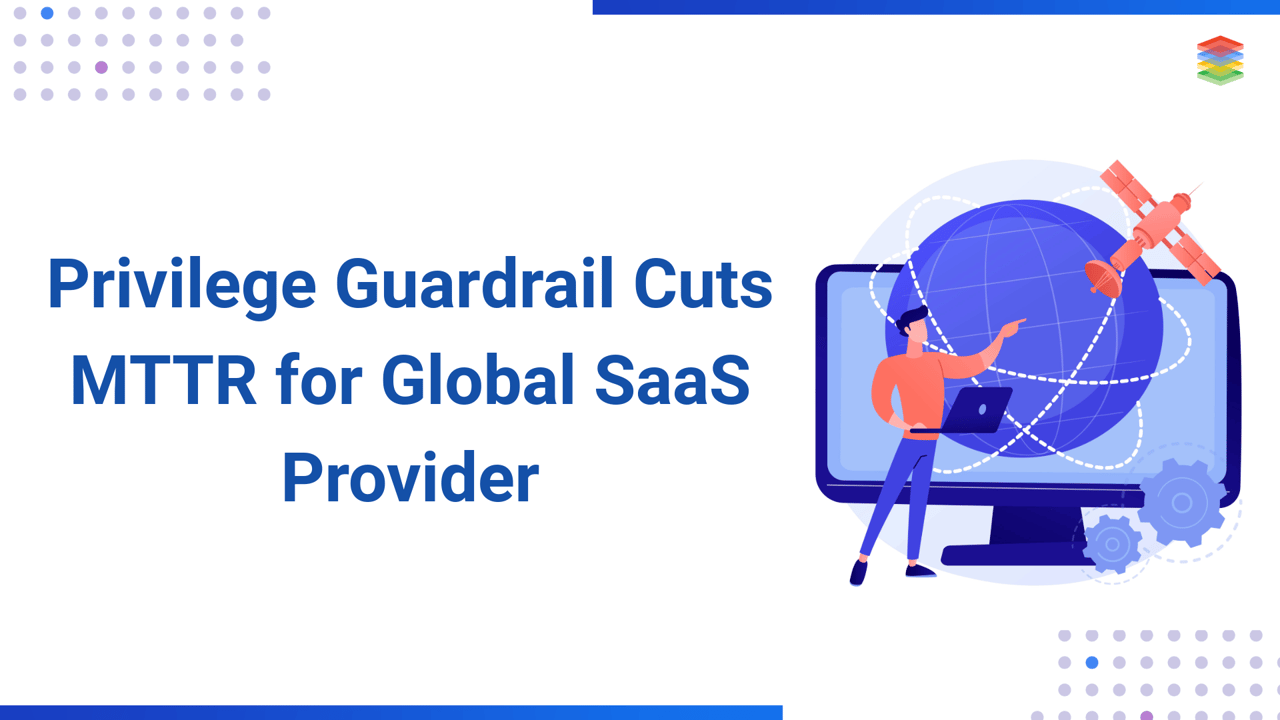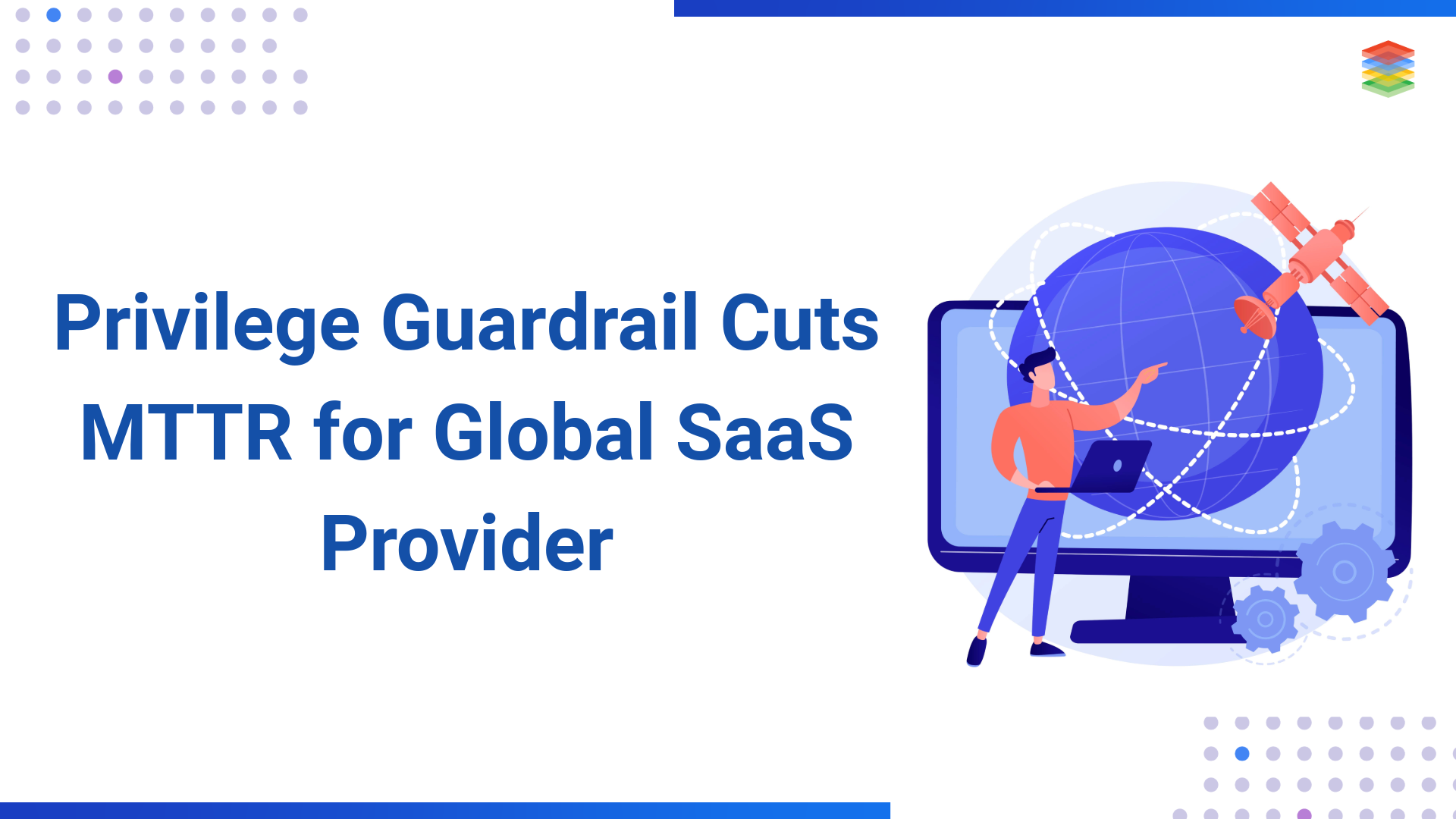
Results and Benefits
Business Outcomes and Success Metrics
By the end of the first 90-day production window, the customer recorded a step-change in security efficiency and operating cost:
-
80% reduction in MTTR for privileged access incidents (135 minutes → 27 minutes).
-
100% prevention of unauthorised admin grants—zero occurrences after cut-over.
-
78% analyst-hour savings on manual log triage, equating to ~1.4 FTEs repurposed to proactive threat-hunting.
-
2x faster feature releases (monthly → bi-weekly) because IAM is no longer bottlenecking CI/CD pipelines.
-
$310 k annual cost avoidance by retiring under-utilized ELK hardware and associated licenses.
-
ROI in < 6 months; total project costs were recouped through labor savings and security incidents avoided before the second quarter's end.
-
Compliance uplift: the organisation passed its SOC 2 Type II audit with zero findings in the Access-Control and Monitoring domains, securing a key enterprise contract renewal worth $1.8 M ARR.
Collectively, these outcomes delivered a measurable competitive edge—faster releases at lower risk—while demonstrating to board-level stakeholders that AI-driven security investments translate directly into business value.
Technical Benefits
-
Performance – the agent meshes sustained 15k log lines/sec with < 300ms end-to-end query latency.
-
Scalability – Fargate tasks auto-scaled from 9 to 24 replicas during load tests without manual tuning, and Aurora Serverless v2 scaled from 1 → 11 ACU in under 45 seconds.
-
Reliability—Blue/green deployments and chaos testing achieved 99.97% mesh uptime; thanks to client-side retry logic, no service degradation occurred during Bedrock throttling events.
-
Security posture: mTLS-encrypted pod-to-pod traffic, CMK-encrypted Aurora/S3, and Cedar policies enforcing least privilege drastically reduced lateral movement risk.
-
Reduced technical debt – Legacy Python revocation scripts and home-grown SIEM parsers were fully decommissioned; all security logic is now declarative (Rego + Cedar) and version-controlled.
-
Developer velocity – Integrated Slack/Jira notifications and chat-first threat hunting cut the mean investigation write-up time from 45 minutes to 8 minutes, freeing engineers to focus on resiliency features.
Customer Testimonial
" AgentSOC turned our IAM approvals from a two-week headache into a 15-minute, AI-driven conversation, giving us the audit evidence our board demanded. It’s the rare security project that both speeds up engineering and tightens controls. "
Lessons Learned
Challenges Overcome
During the first sprint, the team discovered that Amazon Bedrock’s default 20 TPS quota throttled concurrent agent calls, causing intermittent latency spikes. We mitigated this by implementing asynchronous batch wrappers in the ADK toolsets and by requesting a quota uplift early, turning a potential blocker into a one-day fix. Migrating from a legacy ELK stack to Loki also surfaced inconsistent timestamp formats in Meraki syslog.
A custom Promtail stage normalised time zones, and we used a Lambda fan-out to replay one week of historical CloudTrail events, preserving forensic continuity. Finally, the initial plan assumed a single policy engine; in practice, we split authorisation into Cedar (Verified Permissions) for high-level “who can act” and OPA rego for low-level containment logic—an adjustment that improved clarity without delaying go-live. Each challenge reinforced the value of early load-testing, proactive quota management, and iterative architecture reviews.
Best Practices Identified
-
LLM-in-Every-Agent Pattern – Allowing each agent to invoke Bedrock directly produces parallel decision–making and reduced single-point latency.
-
Pure MCP Boundary – Restricting external integrations (Loki, Meraki, Jira) to MCP preserved the integrity of the A2A mesh and eliminated custom REST glue.
-
Policy-as-Code First – Storing Cedar and Rego in the same Git repo as CDK code enabled atomic, auditable deployments and simplified rollback.
-
Blue/Green Fargate Swaps – Zero-downtime upgrades kept analyst trust high and avoided after-hours maintenance windows.
-
Automated Chaos Tests – Detaching critical IAM roles during CI surfaced permission gaps long before production.
Future Plans
The next phase will extend AgentSOC to data-plane protection: automatically quarantining suspicious S3 objects via Amazon Macie findings and publishing compliance dashboards in Amazon QuickSight. Additional integrations—AWS Security Hub for consolidated findings and AWS Step Functions for complex remediation workflows—are already on the roadmap.
Performance profiling shows the mesh can support 3 × current log volume; scaling tests will be completed before onboarding two new business units. Finally, MetaSecure and the customer will collaborate on a public AWS Marketplace listing, enabling other SaaS providers to deploy the same architecture with one-click CloudFormation.
.webp?width=1921&height=622&name=usecase-banner%20(1).webp)




